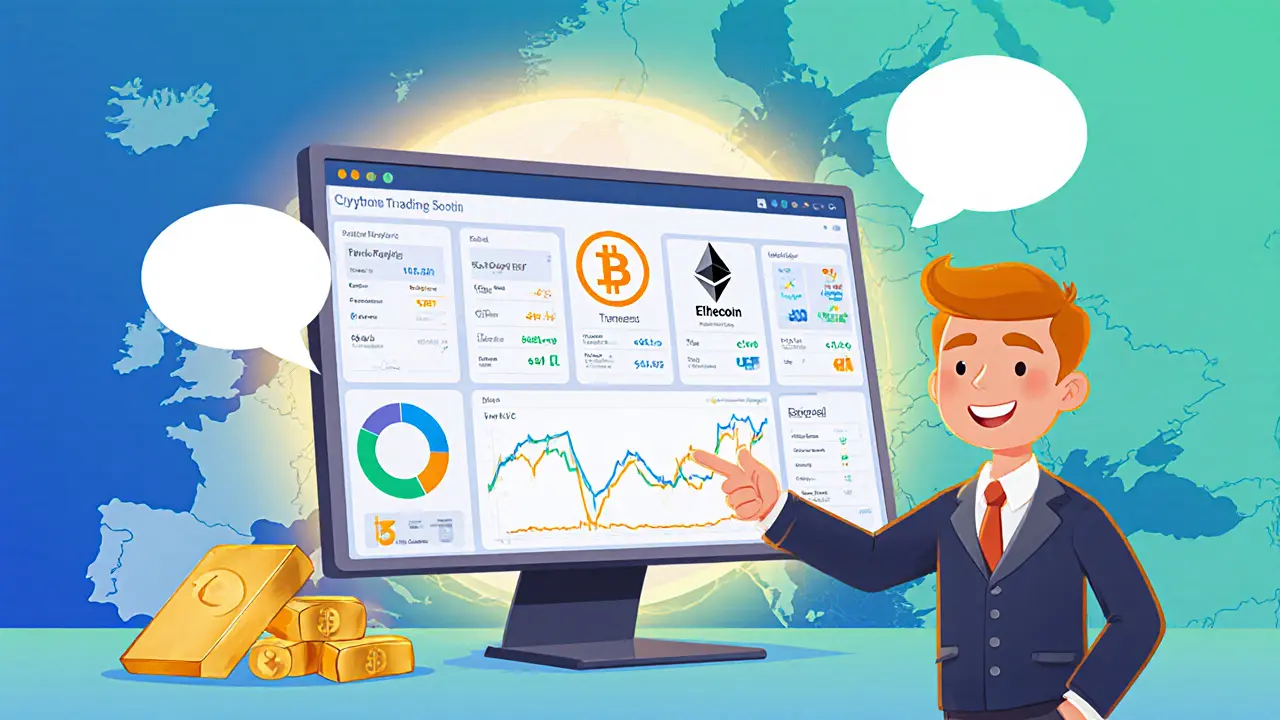A 2025 review of Bitpanda Broker covering fees, security, regulation, asset variety, user experience, and how it stacks up against competitors for European investors.
Bitpanda Fees – What You Need to Know
When checking out Bitpanda fees, the charges applied by the Bitpanda exchange for trading, withdrawing, and converting crypto assets. Also known as Bitpanda cost structure, it determines how much of your profit stays in your pocket after each move. Most users start by asking, “How much will I pay to trade Bitcoin or Ethereum?” The answer depends on a few key components: the trading fee, a percentage taken from each buy or sell order, the withdrawal fee, a flat charge for moving crypto off the platform, and any hidden conversion costs when swapping between fiat and crypto. Understanding each piece helps you avoid surprise losses and lets you plan smarter trades.
The Bitpanda, a European‑based cryptocurrency exchange that also offers stocks, ETFs, and precious metals markets itself as user‑friendly, but its fee model isn’t one‑size‑fits‑all. For casual investors who trade once a month, the flat‑rate trading fee might feel cheap, while high‑frequency traders notice that volume‑based discounts kick in only after crossing certain thresholds. Similarly, withdrawal fees vary by blockchain – moving Bitcoin typically costs more than sending a stablecoin on a low‑fee network. These differences mean you have to match your activity pattern with the right fee tier.
Why Fees Matter for Your Bottom Line
Bitpanda fees encompass both trading fees and withdrawal fees, creating a direct link between cost and net return. Lower fees can boost your effective profit margin, especially on thin‑margin strategies like day‑trading or arbitrage. On the flip side, high withdrawal fees can erode gains when you finally move money to a hardware wallet or another exchange. That’s why many traders run a fee comparison, a side‑by‑side look at charge structures across top centralized exchanges before settling on a platform. A quick spreadsheet that lists % trading fees, flat withdrawal rates, and any hidden spreads often reveals that a seemingly “free” exchange might actually cost more once you add up all the little deductions.
Another factor is the impact of fee structures on trading strategy. If you know that every trade costs 0.25%, you might consolidate orders to hit larger volume thresholds and qualify for lower rates. Conversely, if withdrawal fees on a particular blockchain are steep, you may choose to hold that asset on‑platform longer or use a different network for the final move. These decisions shape your overall risk‑adjusted performance, turning fee awareness into a tactical advantage.
Finally, keep an eye on promotional periods. Bitpanda occasionally offers reduced fees for new users or for specific assets, but those discounts often expire after a set time. Staying up‑to‑date means you can lock in lower rates before they revert, or switch to another exchange if the cost‑benefit balance shifts. In short, treating fees as a dynamic part of your trading plan—not a static background cost—helps you keep more of what you earn.
Below you’ll find a curated collection of articles that break down each element of the Bitpanda fee ecosystem, compare it with rival platforms, and give you actionable tips to keep your costs in check. Dive in to see real‑world examples, fee tables, and step‑by‑step guides that will make your next trade or withdrawal a lot clearer.

